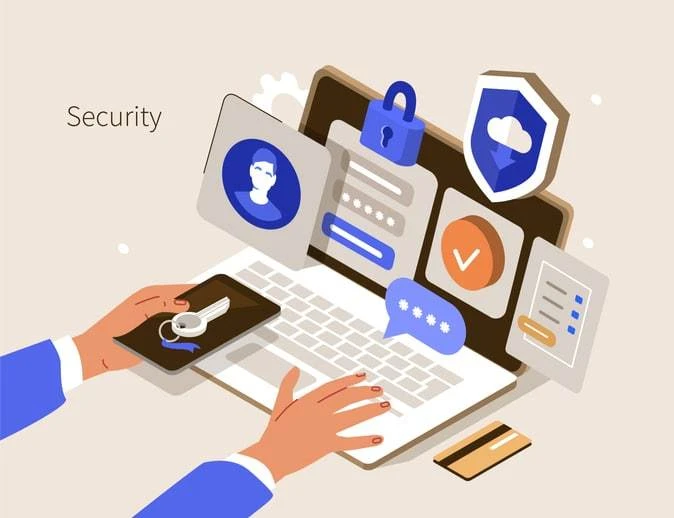Let’s get a few of the basics out of the way to ensure that everyone reading this blog post on how to create a WordPress Blog post knows what a blog post is, what WordPress is, and why it’s important to create content for yourself and your community. If you know the basics and just want a quick answer then CLICK HERE to be taken to the instructions.
First, what is WordPress?
WordPress is an open-source content management system that allows users to create and manage websites. It was first released in 2003 and has since grown to power millions of websites worldwide. WordPress offers a simple and intuitive interface that makes web development easy for both beginners and professionals. Its capabilities range from simple blogs to complex e-commerce websites. The platform’s extensive community provides a plethora of plugins, themes, and additional functionality to build custom websites easily. With WordPress, users can choose from a vast selection of templates, add their content, and modify the design to suit their needs. Additionally, the platform is highly customizable, allowing users to add new features through plugins and extensions. Overall, WordPress’s flexibility, ease of use, and extensive community make it an ideal choice for individuals and organizations looking to build a strong online presence.
What is the importance of writing blog posts?
Writing blog posts is an essential task for any business or individual who wants to establish an online presence. The importance of writing blog posts lies in their ability to provide valuable information to readers, engage with customers or followers, and increase search engine rankings. Blog posts also serve as a platform to showcase a business’s expertise, experience, and opinions, helping to establish credibility and build trust with their audience. Moreover, by consistently publishing high-quality blog content, businesses can attract new leads to their website and increase the chances of conversions. Overall, writing blog posts is crucial to establishing brand awareness, building a loyal audience, and driving traffic to a website. Therefore, dedicating time and effort to creating engaging and informative blog posts should be a priority for anyone seeking to establish their online presence and grow their business.
Is it important to be consistent with my blog posts?
One of the most important aspects of running a successful blog on WordPress is consistently creating content. If you want to build and maintain your audience, then strategic content creation is paramount. Creating a content schedule and sticking to it is key to engaging your readers and making them return. Regular blog posts not only keep your existing readers entertained, but they also attract new followers. Additionally, posting on a regular basis helps establish your blog as an authoritative source in your chosen field. By frequent publishing, your readers learn to rely on your blog as a consistent resource. Also, search engines often rank sites that regularly update their content higher. Consistency in posting will improve the chances of your site coming up in search engine results, leading to more traffic and better rankings over time. If you abandon your blog or are irregular with your publishing, potential readers will lose interest, and you may lose search engine rankings. Therefore, it is important to create content on a consistent basis to attract and retain readers, rank higher on search results, and establish your blog as a reliable source of information in your niche.
Here’s a quick overview of the steps to create a WordPress blog post:
Creating a WordPress blog post can be simple if you follow a few steps. First, access your WordPress dashboard and navigate to the “Posts” section. Click on “Add New” to start a new blog post. After entering a title in the designated field, begin writing your content in the main editor. The editor allows you to add multimedia elements, such as images, videos, and audio, to enhance your post. You can also format your text and use header tags to make it more readable. Once you finish writing, it’s important to proofread your post for grammar and spelling errors. You can then choose to publish your post immediately, schedule it for later, or save it as a draft. Before publishing, it is recommended to add categories and tags to your post for better organization and searchability. Finally, click on “Publish” or “Update” to make your new post live on your WordPress blog.
Now that we have an overview let’s take a detailed look at creating a blog post:
To add a new WordPress blog post, follow these steps:
- Log in to your WordPress dashboard. Typically, you can access it by adding “/wp-admin” to your website’s URL (e.g., www.yourwebsite.com/wp-admin).
- Once logged in, you’ll be on the WordPress dashboard. One way to add a new post is to click on “Posts” in the left-hand menu and then select “Add New.”
- You’ll be taken to the default WordPress editor screen where you can create your blog post. Start by adding a title for your post in the provided field.
- Below the title, you’ll find the main content area. This is where you can write your blog post. You can use the editor toolbar to format text, add links, create headings, and perform other formatting tasks.
- You can also add media such as images, videos, or audio to your blog post. To do this, position your cursor where you want the media to appear, and click on the “Add Media” button above the editor. You can upload media from your computer or select existing media from your media library.
- As you scroll down the editor screen, you’ll see additional options and settings. You can set categories and tags for your blog post to organize your content and improve searchability.
- You can also customize the permalink (URL) for your blog post by clicking on the “Permalink” section and editing it as desired.
- Additionally, you can set a featured image for your blog post, which will be displayed prominently alongside the post. Look for the “Featured Image” section on the right-hand side and click on “Set featured image” to upload or select an image.
- Once you’ve finished writing and formatting your blog post, you can preview it by clicking on the “Preview” button to see how it will appear on your website.
- When you’re satisfied with your blog post, you can either save it as a draft, schedule it for future publishing, or publish it immediately. The available options can be found in the top right-hand corner of the editor screen.
That’s it! You have successfully created a WordPress blog post. Remember to always proofread your content before publishing, and to use high-quality images and relevant tags to increase visibility. You can repeat these steps to create more posts and manage your blog content.
Final thoughts:
Proper imagery:
Images play a significant role in making a blog post visually appealing and effective in conveying its message to the readers. Therefore, it is crucial to ensure that the images used are consistent with the theme of the post in WordPress. A blog post with images that are not relevant or consistent with the message of the post can have a negative impact on the reader’s experience. Furthermore, it can create confusion, disinterest and the reader may end up leaving the blog without understanding the main purpose of the post. Consistent images help readers to comprehend the message that the blogger wants to convey. If the images are in sync with the post, they captivate the attention of the reader and help to reinforce the blogger’s point of view. Using relevant and consistent images with the post also helps to establish the blog as a brand. Thus, the images used in the blog post should reflect the personality and objectives of the blog. Thus, to make a blog post more effective, bloggers need to ensure that the images they use are consistently relevant to the post’s theme. This will help to engage readers, make them feel more involved, and further enhance the effectiveness of the post.
In conclusion,
There is never a better time to start creating amazing content than now. With the power of WordPress, it has never been easier to start your own blog and start sharing your unique perspective with the world. Remember, creating great content isn’t just about writing a post – it’s about offering value and insight to your audience. Whether you’re sharing your expertise, telling a story, or offering a fresh perspective on a topic, your content should be thoughtful, well-crafted, and engaging. Don’t be afraid to experiment with different formats and styles to find what works best for you and your audience. Furthermore, always aim to provide your readers with a sense of purpose and leave them with value that they can take away and apply in their lives. Creating great content takes time and effort, but it is well worth it in the end. So don’t wait any longer – start today and let your creativity take you to new heights!
Happy blogging!






